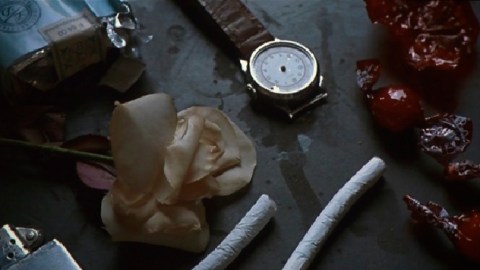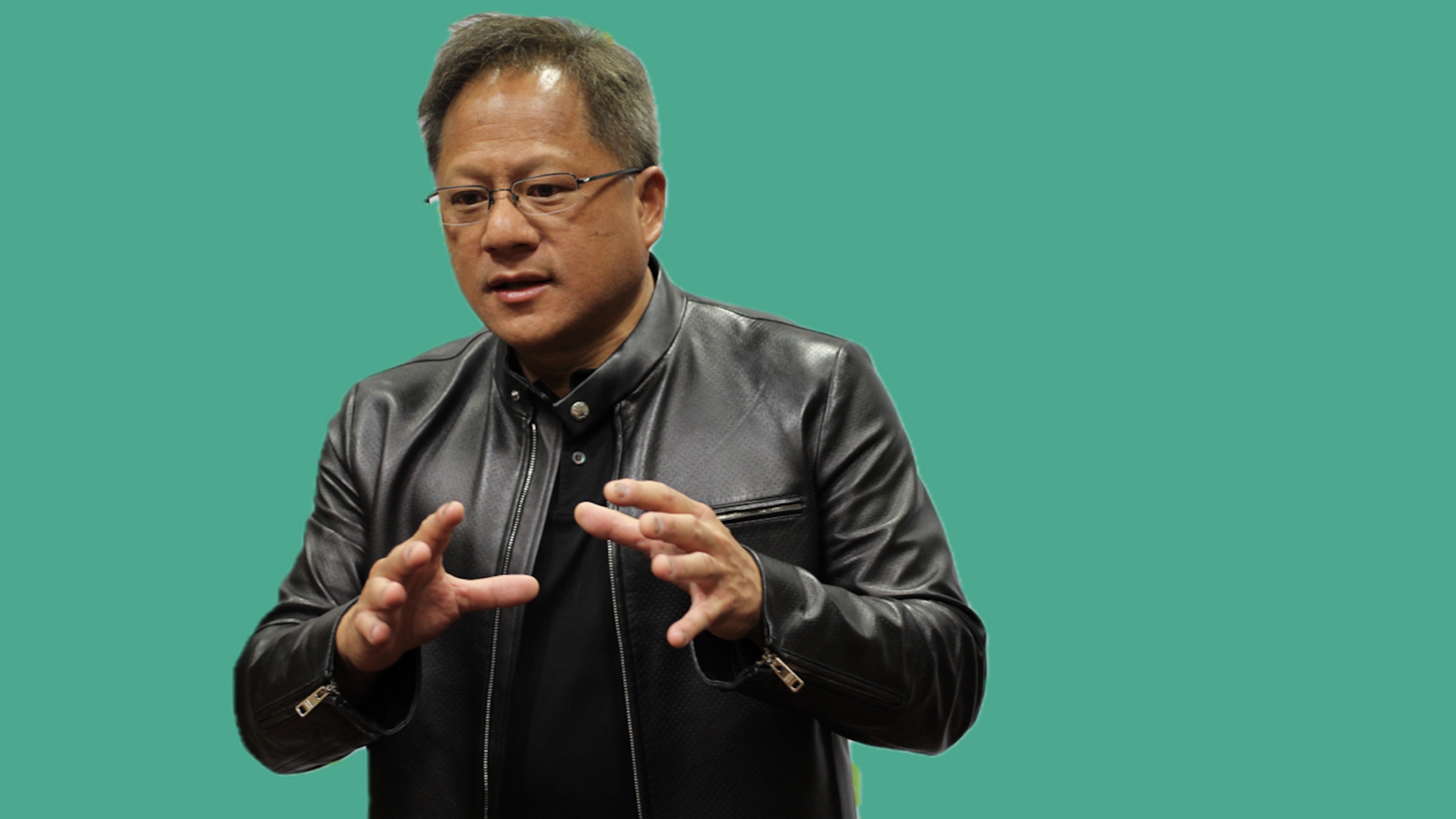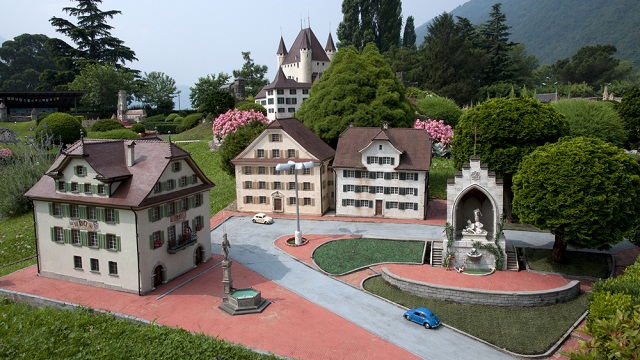Is Christian Marclay’s “The Clock” Still a Modern Masterpiece If Nobody’s Seen It?

The art equivalent of the old “if a tree falls in the forest…” question is, if nobody (or nearly nobody) can see a masterpiece, is it still a masterpiece? How influential is something (or someone) if only a few elite know of its existence or, perhaps even worse, know it only by name or in a grossly abridged version? Christian Marclay’s 2010 film The Clock, one of the most heralded and critically acclaimed works of art of the last 20 years, currently appears in an exhibition at Museum of Modern Art, New York through January 21, 2013, in various forms. The Clock splices together scenes from movies and television programs showing clocks and other timepieces to create a real-time 24 hours of film. It’s brilliant, fascinating, and nearly impossible to watch in full even if you find an opportunity to see it. So, is Christian Marclay’s The Clock still a modern masterpiece if nobody’s seen it?
The Clock stands as perhaps the most perfectly, completely created piece of conceptual art ever imagined. Marclay spent 2 years culling together thousands of time-related scenes from seemingly countless movies and TV shows—some well-known and others less so—into literally a full day of art. For example, Gary Cooper as the weary sheriff from High Noon pops up appropriately and obviously at high noon, but the more general drift of the film consists of continual surprise. Just as a scene pops up and recognition of a familiar face or film settles in, time and the film move relentlessly on. It’s literally as regular as a clock, but with the unsettling irregularity of changed settings and stories. As midnight approaches and a chorus of condemned prisoners call for pardons from a parade of governors, you yourself might ask for a pardon from the overwhelming effect of day-long cinema.
But, of course, who has the time? How many people have really sat through the film in its entirety? Like time itself, The Clock stops for no man or woman’s needs for sleep, food, or even a restroom. Short of a catheter and a stocked mini-fridge, it seems nearly impossible. (The MoMA provided at some showings “an all-night espresso bar” to stave off the sandman.) For those hardy enough to take on the challenge, the MoMA is showing The Clock in its entirety on three weekends (Friday, January 4, 10:30 am, to Sunday, January 6, 5:30 pm; Friday, January 11, 10:30 am, to Sunday, January 13, 5:30 pm; and Friday, January 18, 10:30 am, to Sunday, January 20, 5:30 pm). If you’re in the area and give it a go, please report back in the comments with your experience, succeed or fail.
The impossibility of viewing The Clock all at once raises the question of whether Marclay ever intended anyone to see it in such a way. I haven’t read every interview by Marclay, but I’ve yet to see him definitively declare his intentions either way. The closest equivalent I can come up with is Richard Wagner’s operatic Ring Cycle (or, for the Teutonically minded, Der Ring des Nibelungen), the nearly 15-hour Gesamtkunstwerk or “total artwork” consisting of the four parts titled Das Rheingold, Die Walküre, Siegfried, andGötterdämmerung. Wagner intended the four parts to be viewed as a whole, so to show them all in one day would place “The Twilight of the Gods” sometime after twilight itself. Even the Bayreuth Festival Theater, site of the world’s largest annual Wagner-palooza since 1876, shows the Ring Cycle over the course of a still overwhelming 4 days.
Do we really need to see The Clock or the Ring all at once to appreciate its beauty and power? I admit to taking Wagner in small doses on CD and DVD over the years for both aesthetic and logistical reasons over the years, but I feel I’ve learned to gain some value from the time spent. You can see from 12:04 to 12:07 pm of The Clock on YouTube, which is just a tiny fraction of the whole work, but you get the gist of how the film moves and touches upon the issues addressed throughout. Colin Firth pops up at both the beginning and the end of the YouTube clip as just one of the reappearing actors whose changing age becomes a minor motif of The Clock, making the actors stand-ins for our own mortality. Moments of joy in anticipating a romantic encounter or anxiety at anticipating approaching death also appear in that clip to represent Marclay’s continual focus on the twin towers of life’s meaning—love and death—which are also the times in real life we tend to watch the clock most closely. Coupling that clip with the reading and research I’ve done on The Clock, I feel, as with Wagner’s magnum opus, I’ve gained a fair share of value for the time spent.
But even if Marclay didn’t intend for us to spend a whole day watching his cinematic day, aren’t we missing something for not having that total experience or at least trying to have that experience? Isn’t reading just Swann’s Way from Marcel Proust’sÀ la recherche du temps perdu and calling it enough, missing Proust’s point? Some works of art exist only if we feel them in their entirety. Herman Melville’s Moby-Dick feels like a long slog at sea precisely because Melville wanted us to experience a disorientating weariness while imaginatively “standing” beside the crewmembers of the Pequod as they questioned whether to follow Captain Ahab on his quest. Think of it as a chronological component of multimedia virtual reality. In addition to experiencing sights, sounds, smells, and all other sensory data, our sense of time is manipulated by the artist. Wouldn’t spending a day watching The Clock make us appreciate all the other days we have to live even more, a multifold return on our temporal investment?
Whereas Benjamin Franklin said that “Time is money,” Marclay says in The Clock that “Time is meaning.” Whether we get a little or a lot of it, The Clock reminds us that time is man-made and that, ultimately, we rule it rather than it rules us. Stop watching the clock and watch The Clock, if you can.
[Image:Christian Marclay. Detail of The Clock. 2010. Single-channel video with sound, 24 hours. © Christian Marclay. Courtesy Paula Cooper Gallery, New York, and White Cube, London. Photo: Todd-White Photography.]
[Many thanks to the Museum of Modern Art, New York, for providing me with the image above and other press materials related to their exhibition of Christian Marclay’s The Clock, through January 21, 2013.]





